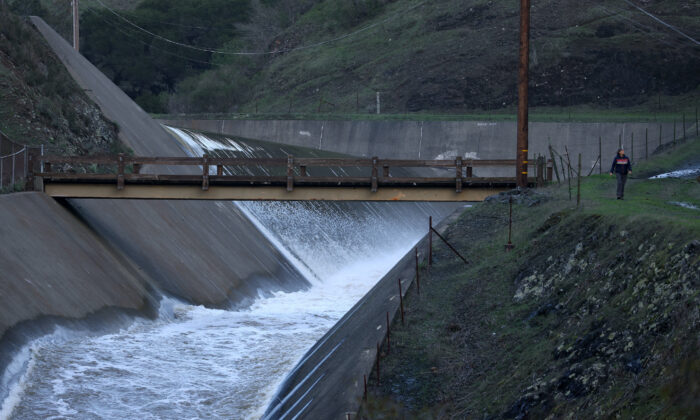California and Federal Government Reach Agreement on Water Management Plan
Improving water supply management and enhancing rainwater capture during the wet season are key priorities for the state.
On December 23, California Governor Gavin Newsom revealed an agreement with the Biden administration aimed at regulating water supplies that cater to nearly 30 million residents.
This agreement, developed over three years, involved collaboration from various agencies, including the California Department of Water Resources, the U.S. Fish and Wildlife Service, the National Marine Fisheries Service, and the California Department of Fish and Wildlife.
The reforms aim to enhance resilience to the “extreme fluctuations” between flooding and droughts, as stated by the governor’s office.
“This new framework strengthens our adaptive management, allowing project operators to collaborate with water users and the wider community to better manage the system for the benefit of millions of Californians and endangered fish species,” said Karla Nemeth, director of the California Department of Water Resources, in the same statement. “Given the reality of extreme storms and prolonged droughts, we must be as adaptable as possible in operating our water infrastructure.”
According to the agreement, endangered species will benefit from improved water flow, habitat restoration, and hatchery monitoring.
A decision signed by the U.S. Bureau of Reclamation on December 20 outlines how water will be managed in the Central Valley Project.
This project captures water from regions as far north as Redding and delivers it as far south as Bakersfield, spanning 400 miles through an intricate network of dams, reservoirs, canals, and aqueducts.
“The strength of the Central Valley Project is essential for California’s agricultural industry and drinking water supplies, making it vital for our state’s water sustainability,” stated Mike Brain, the bureau’s principal deputy assistant secretary for water and science, in a statement. “The revised operational framework will enhance regulatory clarity for water users, while ensuring a more reliable water supply for various communities, farms, and fish.”
Reclamation Commissioner Camille Calimlim Touton noted that the plan will support initiatives aimed at enhancing water storage capacity and drought management strategies.
Moreover, the reclamation bureau announced on December 23 that discussions are forthcoming regarding long-term water contracts for specific wildlife refuge areas.
Public feedback will be accepted on January 7 and 9 in Sacramento.
The Newsom administration is focused on enhancing California’s water supply infrastructure.
In November, the state received approval for an operating permit for the State Water Project after extensive environmental reviews.
Across the state, communities received $880 million in grants to support 395 projects in the previous fiscal year, benefiting roughly 12 million residents.
California has also improved its capacity to capture rainwater and replenish underground aquifers.
Approximately 740 billion gallons of rainwater are lost to the sea annually in California, according to a report published in February by the nonprofit think tank Pacific Institute.
On a national scale, researchers estimate that about 53 billion gallons of fresh water are lost to the oceans every day.
“The figures are undeniable. It’s essential to elevate the conversation around stormwater capture in the national dialogue,” stated Bruk Berhanu, a senior researcher at the Pacific Institute and lead author of the report, in a statement. “There is significant potential for stormwater capture initiatives to address many challenges, thereby improving overall water resilience.”
The newly signed agreement includes provisions to promote projects supported by the governor, notably the Delta Conveyance Project and the Sites Reservoir.
The ambitious delta project chiefly focuses on minimizing earthquake damage, proposing the construction of a water tunnel approximately 150 feet underground that would extend 45 miles through the Central Valley.
The estimated cost is $20 billion, and the project has faced opposition from groups concerned about environmental and community repercussions.
The proposed Sites Reservoir aims to redirect water from the Sacramento River to inundate around 13,200 acres in Glenn and Colusa counties, located northwest of Sacramento. This system would comprise a bridge, two reservoirs, 11 dams for water level management, and a newly constructed system to convey water to local communities.
The Sites Reservoir would have the capacity to supply water for approximately 3 million homes for one year, aiding in the retention of water during rainy seasons for later use when it is most necessary.
With a projected cost of $4 billion, the project has encountered various legal challenges from environmental organizations and other parties.
A court in Yolo County dismissed a petition in June to block the initiative, a resolution that the governor welcomed.
“California urgently needs more water storage; we must act without delay—initiatives like the Sites Reservoir will capture rain and snow runoff to supply millions with safe drinking water,” Newsom said in a statement. “We are approaching our work with a sense of urgency, encompassing everything from water storage to clean energy and transportation initiatives.”





